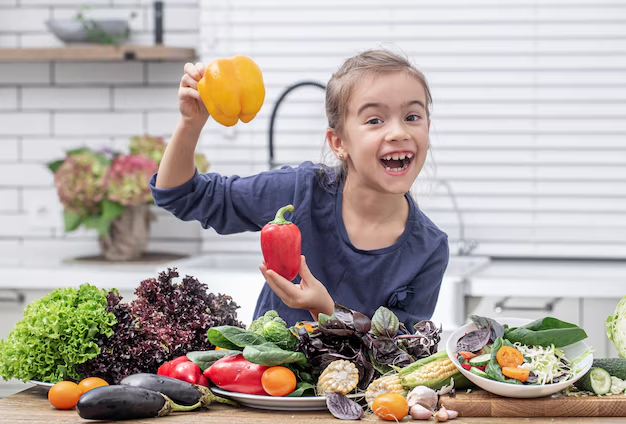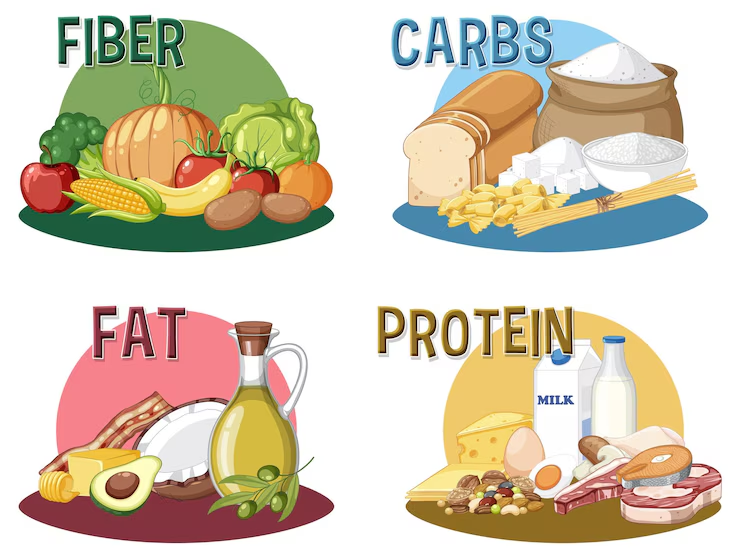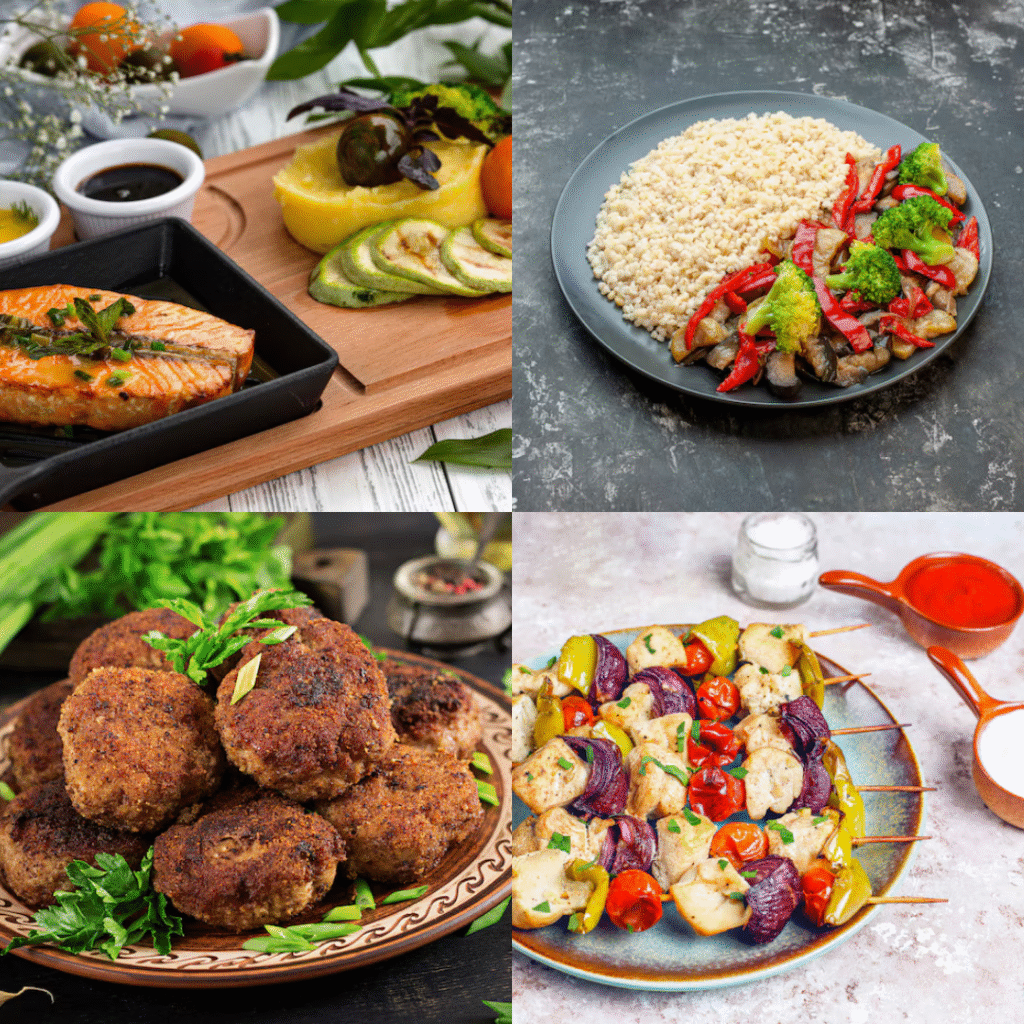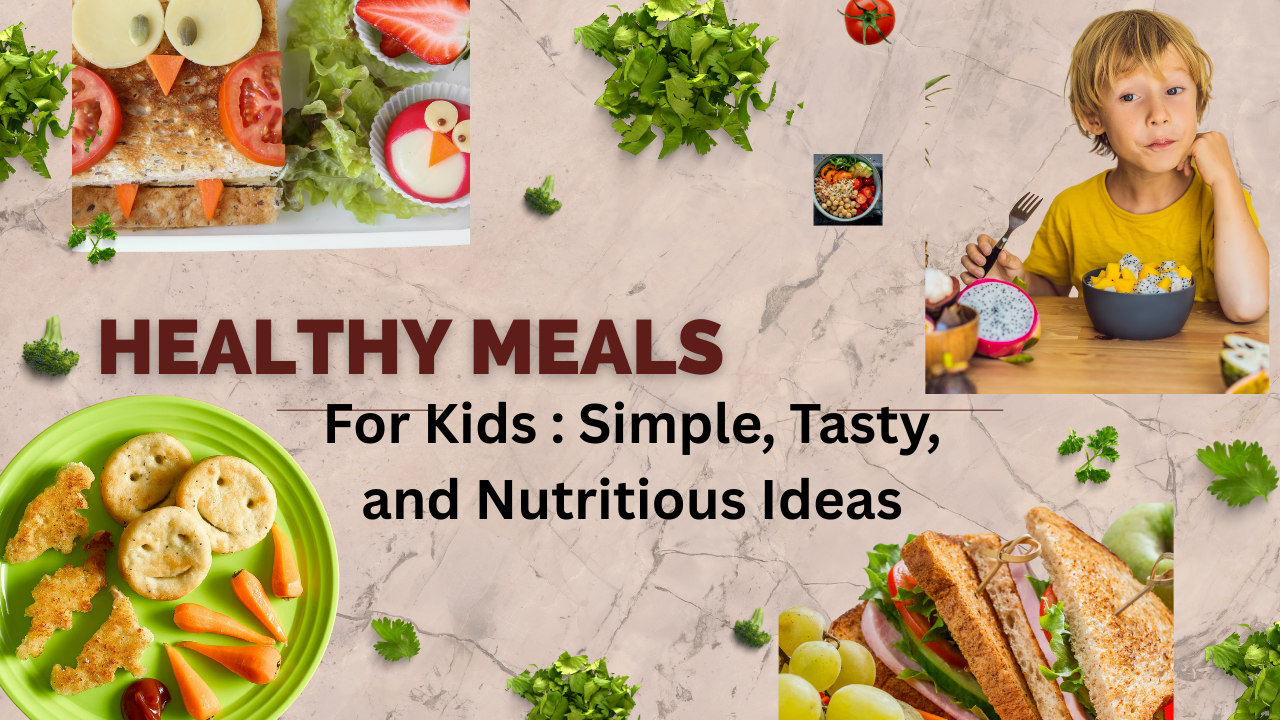Healthy meals for kids play a vital role in their growth and development. A balanced diet gives children the energy they need to stay active, focus in school, and build strong bones and muscles. Offering a mix of fruits, vegetables, whole grains, and proteins ensures they receive all the essential nutrients their bodies need.
Creating healthy meals for kids can be fun and easy. Include colorful vegetables in pasta dishes or serve fruit with yogurt as a sweet treat. Homemade soups, grilled sandwiches with whole wheat bread, and baked snacks are great ways to keep meals nutritious and tasty. Limiting added sugar and processed foods helps build better eating habits early on.
Parents can also involve children in the meal preparation process. Letting them choose ingredients or help with simple tasks in the kitchen makes them more likely to enjoy and eat healthy foods. Consistency and creativity make healthy meals for kids enjoyable every day.
This comprehensive article explores the importance of healthy meals for kids, key nutrients they need, practical meal planning tips, and easy-to-follow recipes that balance nutrition with taste.
Why Healthy Eating Matters for Children

Supports Overall Physical Growth and Development
During childhood, especially in the early years and teenage stages, the body experiences fast and important growth. Providing healthy meals for kids filled with essential nutrients helps in building strong bones, well-developed muscles, and properly functioning organs. Nutrients such as calcium, healthy fats, and protein are especially important in supporting this natural development process.
Improves Brain Function and Academic Learning
Healthy meals for kids play a key role in boosting their ability to think clearly, concentrate better, and perform well in school. Nutrients like omega-3 fatty acids, iron, and complex carbohydrates are necessary for supporting memory, brain development, and cognitive performance during the growing years.
Strengthens the Immune System Naturally
Nutritious food choices help children fight off common illnesses such as colds and flu. By including vitamins C and D, antioxidants, and zinc through healthy meals for kids, their immune systems become stronger and more resilient over time.
Lowers the Risk of Long-Term Health Problems
Offering healthy meals for kids every day helps reduce the chances of developing serious health conditions like childhood obesity, type 2 diabetes, and heart disease later in life. It also teaches children to make smart food choices, creating healthy habits that can last into adulthood.
Key Nutrients Children Need
To build a solid foundation for lifelong health, children require a well-rounded intake of macronutrients and micronutrients:
Protein: Protein is very important in healthy meals for kids as it supports their growth, helps build muscles, and repairs body tissues. Some of the best sources of protein include lean meats like chicken, fish, eggs, dairy products, beans, lentils, nuts, and seeds. Including these in meals helps children stay strong and active.
Carbohydrates: Carbohydrates give children the energy they need to play, learn, and grow. Healthy meals for kids should focus on complex carbohydrates such as whole grains. Examples include brown rice, whole wheat bread, oats, and quinoa, which offer steady energy and important nutrients.

Fats: Fats are essential for brain growth and making important hormones. In healthy meals for kids, it’s best to include healthy fats such as avocados, olive oil, nuts, and oily fish like salmon. These help in brain development and overall health.
Vitamins and Minerals: Healthy meals for kids must contain key vitamins and minerals. Calcium supports bone health and is found in milk, leafy greens, and fortified products. Iron helps carry oxygen in the blood and can be found in red meat, beans, and fortified cereals. Vitamin D, needed to absorb calcium, comes from sunlight, milk, and eggs. Vitamin C boosts the immune system and is rich in citrus fruits, berries, and bell peppers.
Fiber: Fiber is essential for a healthy digestive system. It keeps bowel movements regular and helps prevent constipation. Healthy meals for kids should include fiber-rich foods such as fruits, vegetables, whole grains, and legumes.
Building a Balanced Plate
| Meal Planning Guide for Healthy Meals for Kids | Portion Suggestion |
|---|---|
| Fruits and Vegetables | Half of the plate |
| Lean Protein | One-quarter of the plate |
| Whole Grains | One-quarter of the plate |
| Dairy or Dairy Alternatives | One serving (e.g., a glass of milk or yogurt) |
Example Meal Plan:
| Meal Item | Type |
|---|---|
| Grilled chicken breast | Lean protein |
| Brown rice | Whole grain |
| Steamed broccoli & carrots | Vegetables |
| Glass of milk | Dairy |
| Sliced apples with peanut butter | Fruit + healthy fat |
Healthy Breakfast Ideas
Breakfast fuels children for the day ahead. Here are some wholesome options:
Oatmeal Served with a Wide Variety of Fresh and Nutritious Fruits

A warm, comforting bowl of oatmeal made from slow-cooked rolled oats provides a nourishing base for a delicious and healthful breakfast. When topped with naturally sweet banana slices, a mix of fresh berries such as blueberries and strawberries, and a sprinkle of aromatic cinnamon, it becomes both flavorful and satisfying. To further enhance the nutritional value of this meal, parents can add a spoonful of nutrient-rich chia seeds or ground flaxseeds. These small additions boost fiber and omega-3 content, making this one of the most complete and energy-supporting healthy meals for kids.
Homemade Whole Grain Pancakes Paired with Creamy Yogurt and Colorful Fruit
Pancakes can be made more nutritious by using whole wheat flour instead of refined white flour, which increases fiber and essential vitamins. Once cooked to a golden brown, these wholesome pancakes can be served with a generous portion of thick and creamy Greek yogurt. To make the plate even more appealing and vitamin-rich, add slices of seasonal fruits like kiwi, mango, or berries. A drizzle of honey may be included for children over the age of one to add a touch of sweetness. Altogether, this makes for one of the most balanced and delightful healthy meals for kids to enjoy, especially during breakfast or brunch.
Baked Egg Muffins Filled with Fresh Vegetables and Melted Cheese
Egg muffins are an incredibly convenient and protein-packed meal option that parents can prepare in advance. These mini muffins are made by whisking fresh eggs and mixing them with finely chopped vegetables like spinach, bell peppers, and even grated carrots for extra nutrients. A sprinkle of shredded cheese adds flavor and calcium. The mixture is then poured into muffin tins and baked until golden and fluffy. These savory muffins are portable, easy to reheat, and packed with protein, vitamins, and minerals—making them a practical and delicious choice among healthy meals for kids, especially on busy school mornings.
Colorful and Nutrient-Dense Smoothie Bowls Topped with Fresh Ingredients
A smoothie bowl is not only visually appealing but also incredibly nutritious and fun to eat. Start by blending a combination of frozen bananas, mixed berries, a handful of leafy greens like spinach, and a generous scoop of plain yogurt until smooth and thick. Pour the smoothie into a bowl and decorate the top with crunchy granola, pumpkin or sunflower seeds, shredded coconut, and neatly arranged fruit slices. This artistic meal is full of fiber, antioxidants, and essential vitamins, making it one of the most engaging and nutrient-dense healthy meals for kids. It encourages creativity and enjoyment while promoting good nutrition.
Nutritious Lunchbox Ideas
Turkey and Cheese Roll-Ups with Wholesome Sides
A simple yet protein-rich option, these roll-ups are created by wrapping lean, low-sodium turkey slices around sticks of reduced-fat cheese. This combination provides a satisfying blend of protein and calcium, ideal for growing bodies. To complete this nutritious lunch, pair the roll-ups with a serving of whole grain crackers for added fiber, a handful of fresh grapes for natural sweetness, and crunchy carrot sticks for vitamins and texture. Altogether, this well-balanced plate is one of the more convenient and enjoyable healthy meals for kids.
Hummus and Fresh Vegetable-Stuffed Whole Wheat Pita
This heart-healthy meal option features a soft whole wheat pita pocket generously filled with creamy hummus and a variety of fresh vegetables. Crisp cucumber slices, leafy lettuce, and juicy cherry tomatoes add color, crunch, and essential nutrients. This plant-based meal provides fiber, healthy fats, and vitamins, making it a refreshing and satisfying example of healthy meals for kids that also introduces diverse textures and flavors.
Build-Your-Own Taco Box with Nutritious Ingredients
A fun and interactive way to enjoy lunch, this do-it-yourself taco box includes a range of wholesome ingredients children can assemble on their own. Fill the box with lean ground turkey or fiber-rich beans, shredded lettuce, low-fat cheese, sweet corn, fresh tomato salsa, and soft whole wheat tortillas. This engaging lunch option supports balanced nutrition while encouraging kids to be involved in their meal choices. It’s one of the most versatile and enjoyable healthy meals for kids.
Colorful Pasta Salad with Vegetables and Light Dressing
This cold pasta dish combines whole grain pasta with an assortment of finely chopped vegetables such as bell peppers, cherry tomatoes, cucumbers, and olives. Tossed lightly in a vinaigrette made from olive oil and lemon juice, the salad offers a refreshing taste and a variety of textures. This fiber- and vitamin-rich dish is perfect for school lunches or summer meals, making it a delightful and satisfying option within the category of healthy meals for kids.
Wholesome Dinner Recipes
Dinner is a great time to introduce new flavors and ingredients.

Oven-Baked Salmon Served with Roasted Sweet Potatoes and Green Beans
This nutrient-dense dinner features tender fillets of oven-baked salmon, a fish known for its high content of omega-3 fatty acids that support heart and brain development. Paired with roasted sweet potatoes, which are rich in dietary fiber and beta-carotene, and a side of steamed green beans, this colorful and well-balanced plate is a great example of healthy meals for kids that nourish the body and encourage better eating habits.
Stir-Fried Mixed Vegetables with Protein and Brown Rice
A vibrant stir-fry made with a variety of crisp, colorful vegetables such as broccoli florets, bell pepper strips, and snow peas creates an eye-catching and nutritious meal. Sautéed with a choice of tofu or lean chicken breast in a light sesame oil and reduced-sodium soy sauce, and served over fiber-rich brown rice, this dish is a flavorful and satisfying example of healthy meals for kids, offering both taste and valuable nutrients.
Turkey Meatballs with Roasted Spaghetti Squash as a Pasta Alternative
This creative twist on traditional spaghetti provides a lighter and more nutritious alternative by replacing refined pasta with roasted strands of spaghetti squash. Accompanied by oven-baked turkey meatballs, which are a lean source of protein, and a simple tomato-based sauce, this wholesome meal delivers a combination of vegetables and protein, making it a delicious and thoughtful choice among healthy meals for kids.
Grilled Chicken and Vegetable Skewers for a Fun Meal Experience
This meal features skewers threaded with bite-sized pieces of lean grilled chicken breast, along with a variety of fresh vegetables such as bell peppers, zucchini slices, and cherry tomatoes. Lightly seasoned and grilled to perfection, these colorful kebabs provide protein, fiber, and antioxidants. Served with a healthy side like whole grain couscous or brown rice, this interactive dish stands out as one of the more engaging and nutritious healthy meals for kids.
Smart Snacks for Kids
Healthy snacks keep energy levels stable between meals.
Apple slices with almond butter
Greek yogurt with honey and berries
Hard-boiled eggs and whole-grain toast
Mini rice cakes with cottage cheese
Trail mix (homemade with nuts, seeds, and raisins)
Celery sticks with cream cheese
Healthy Desserts They’ll Love
It’s common for kids to be selective eaters. Here’s how to encourage healthier choices:

Avoid Forcing or Pressuring the Child: Morning mealtime into a power struggle, try to create a relaxed and positive environment. Introduce new foods slowly by offering them alongside familiar favorites. This gentle approach helps children feel more comfortable exploring healthy meals for kids at their own pace.
Make Food Visually Fun and Engaging: Encourage children to enjoy their food by presenting it in creative ways. Use cookie cutters to make sandwiches or fruits into fun shapes, or arrange meals to resemble smiley faces or animals. Adding a playful touch can make healthy meals for kids more exciting and appealing.
Offer Simple and Healthy Choices: Give children a sense of control by letting them choose between two nutritious options. For example, ask, “Would you like carrots or cucumbers with your lunch?” This approach promotes independence while keeping the focus on healthy meals for kids.
Be Patient with Repeated Exposure: Children may need to see or taste a new food many times—sometimes 10 to 15—before they accept it. Continue offering it without pressure, alongside meals they already enjoy. With time and patience, they are more likely to accept and enjoy a wider variety of healthy meals for kids.
Meal Planning Sample: One Week Healthy Menu
| Day | Breakfast | Lunch | Dinner | Snack |
|---|---|---|---|---|
| Monday | Scrambled eggs, whole grain toast, strawberries | Veggie wrap with hummus, apple slices | Grilled chicken, quinoa, steamed broccoli | Yogurt with granola |
| Tuesday | Overnight oats with banana | Turkey sandwich, carrot sticks, orange slices | Baked cod, brown rice, mixed vegetables | Trail mix |
| Wednesday | Smoothie with spinach, berries, and yogurt | Pasta salad with veggies and chickpeas | Beef stir-fry, whole grain noodles, snow peas | Sliced cucumber with ranch dip |
| Thursday | Greek yogurt parfait with fruit and nuts | Chicken quesadilla with salsa, corn | Lentil soup, whole grain bread, side salad | Apple and peanut butter |
| Friday | Whole grain waffles, blueberries | Tuna salad on whole wheat bread, cherry tomatoes | Turkey burgers, sweet potato fries, peas | Cheese and whole grain crackers |
| Saturday | Pancakes with banana slices | Pita pocket with falafel, lettuce, and tzatziki | Baked ziti with spinach, side of roasted carrots | Fruit smoothie |
| Sunday | Vegetable omelet, whole grain toast | Grilled cheese with tomato soup | Roast chicken, mashed cauliflower, green beans | Frozen yogurt and berries |
Conclusion

Planning and preparing healthy meals for kids is one of the most important ways to support their overall growth and well-being. A well-balanced diet filled with fruits, vegetables, whole grains, lean proteins, and healthy fats not only fuels their daily activities but also builds strong habits that last a lifetime. Offering a variety of colorful, tasty, and nutritious foods encourages children to explore different flavors and textures while meeting their nutritional needs.
Creating healthy meals for kids doesn’t have to be complicated. Simple adjustments like using whole grains, adding more vegetables, or preparing food in fun shapes can make a big difference. Including your child in meal planning or preparation also increases their interest in what they eat. With a little creativity and consistency, you can make mealtimes enjoyable and nourishing.
By focusing on healthy meals for kids every day, parents can lay the foundation for lifelong health and smart food choices.
FAQs
What are some easy healthy meals for kids ?
Simple options include veggie wraps, pasta with vegetables, turkey roll-ups, oatmeal with fruit, and yogurt parfaits.
How can I get my child to eat more vegetables in healthy meals for kids ?
Try adding veggies in fun ways—like making smiley faces on plates, blending them into smoothies, or mixing into pasta or quesadillas.
Are snacks considered part of healthy meals for kids ?
Yes, snacks like fruits, nuts, yogurt, or cheese with whole grain crackers can provide essential nutrients between meals.
Can picky eaters still enjoy healthy meals for kids ?
Absolutely! Offer small portions, repeat exposure, and pair new foods with familiar favorites to slowly build acceptance.
How often should I serve healthy meals for kids ?
Aim for three balanced meals and two healthy snacks daily to support consistent energy and nutrition.


